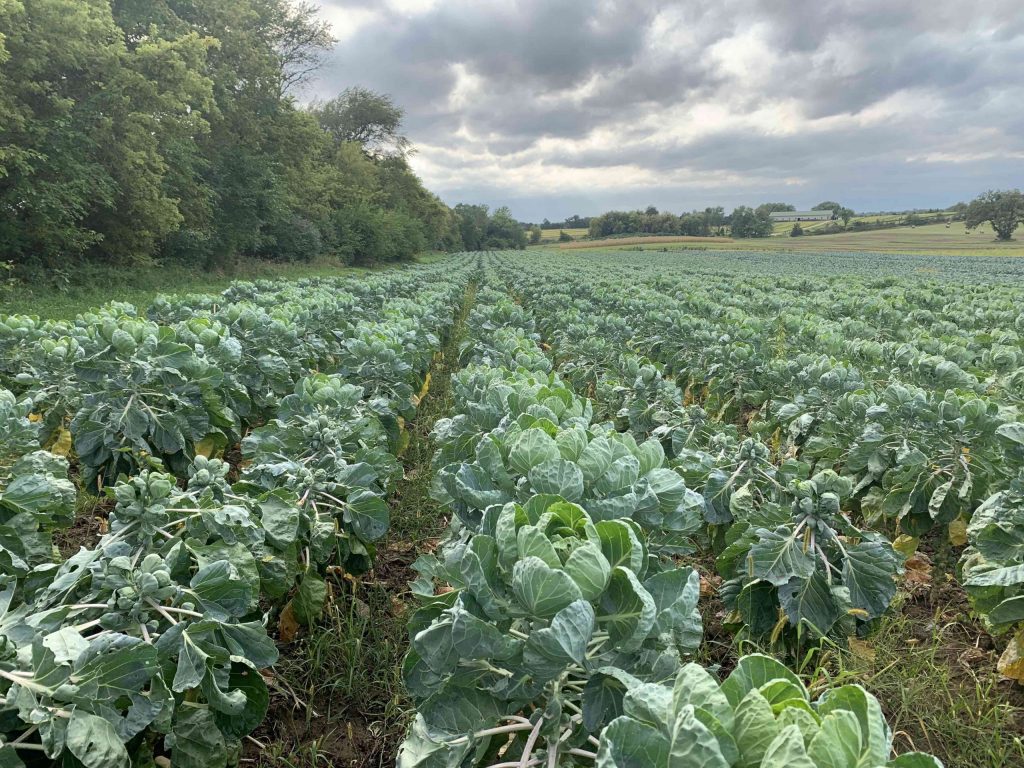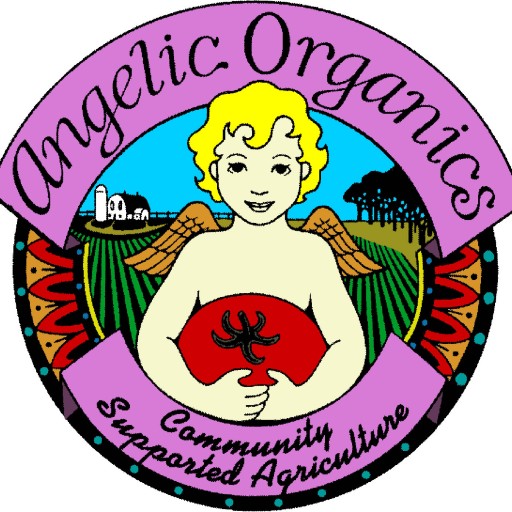Farmer John Writes: Playing the Field(s)
Harvest Week 15, September 29th – October 5th, 2020
Take a Step Back to Look at the Future
In case you missed it, please check out the important announcement in last week’s newsletter, Farmer John Writes: About a Fortune Teller. We are migrating to a new CSA management platform in 2021, and 2021 shares are now available.
What Would You Do?
What would you do if you were farming organically for your CSA, and every time you seeded a field to baby greens, radishes, or turnips, the weeds engulfed the crop? Let’s say you had a big crew of good workers to hand weed the crops, yet the weeds still got away from them; the crew simply couldn’t keep up with the weed growth? You spent tens of thousands of dollars on futilely weeding fields that have never before experienced such weed pressure. Your responsibility is to provide food for your shareholders, but the weeds keep ruining the crops. What would you do if you were that farmer?
I’ll share what I did. I kept trying. There’s a method for controlling weeds known as stale seedbedding, where I shallow till the beds—just disturb the top inch or two of the soil, so as to not bring up weed seeds from further below to germinate. The process decimates the weeds in the top layer of soil. Then I wait for a rain to germinate more weeds, then stale seedbed again, then finally re-seed the beds. Of course, there are many other things to do on our farm than valiantly fight overwhelming weeds in a few fields, so this activity of stale seedbedding has to be fit in amongst many other crucial farm activities.
Weeds are a concern to many, including David Lynch.
Back to you being a CSA farmer, let’s say you tore up one crop of baby greens, because they were lost to weeds, and you stale seedbedded persistently, confident that the weed tillage would decimate the weed population and you would then prepare the field for a mostly-weed-free, lovely crop of baby greens. But the weeds proliferated again, way beyond your capacity to control them. What would you do? Let’s imagine this is the second total crop loss from these fields. Would you tell your shareholders they would receive no or few baby greens this season? Or would you try again, incurring fuel and labor and seed costs? Would this be a moral dilemma for you—to conserve shareholder funds or to risk them on crops likely to be lost?
I kept trying (risking funds). By early August, many of these fields had been torn up and re-seeded twice, with no crops to show for it. I figured that as day length shortened, the power of weeds to sprout and flourish would diminish. I have seen this happen rather predictably in the past, that the weed pressure would dramatically subside as the day lengths waned. More tillage, more seeding, more weeds.
If you lost to weeds three crops each in many of your fields in one season, what would you do?
Good to cut one’s losses, no? No use to kick a dead horse, the saying goes. Of course, the shareholders need their greens, want their greens. But each seeding effort had so far been futile. Of course, I should sometimes cut my losses. But when? So far, tens of thousands of dollars had been lost to those fields—tens of thousands. Whose money is it? Is it mine? It is the money that shareholders have entrusted me with to grow their food. Is that a responsible application of shareholder funds, to keep spending the money on crops likely to fail?
I kept trying. I decided that I would seed baby greens in many fields at once, hoping that at least one of those fields would have minimal weed pressure and we would get a crop from that field.
Tinder
I seeded one field to baby lettuce and arugula; another to baby lettuce and arugula and radishes and turnips; another field to pea shoots; and part of another field to radishes. In most of these cases, I was seeding the fourth crop, after three failed crops. I figured at least one of these fields would grow successful crops.
I suppose this strategy is a bit like Tinder, where one has a lot of candidates to choose from, increasing the odds of one successful outcome.
So Many Matches
The weeds just stopped growing around mid-August. Suddenly, there was field after field of weed free or mostly weed free baby greens. That’s a lot of baby greens. I was betting that out of the four fields I seeded, we might get a crop out of one of them. All four are beginning to brim with greens.
Playing the Field(s)
In the Tinder model, this could lead to overwhelmedness—suddenly having many successful swipes after enduring failed swipes over and over. Suddenly, there are four matches, but really, I was only hoping for just one success out of these four fields.
“How’s farming going this year?”
“Well, I’m playing the fields more than usual—finally working out okay.”
In Case You Wondered
Now you know why you have lots of baby greens to choose from this fall.

arugula
But, I Thought September Is a Wet Month
I had the crew dismantle all the irrigation pipe after a big rain in early September. The pipe was a bit in the way of field operations, and, besides, rain likes to frequent our fields throughout September…but not this September—dry. Then more dry, warm and dry. We laid the pipe back out last week.

first good crops from this field after many tries: (right to left) weed-free radishes, turnips, cilantro, dill, baby lettuce, arugula
Thank You, Denise
Denise Glasenapp has been our Community Coordinator for the past two years. She has graciously and generously interacted with many of our shareholders during this time, in addition to proficiently handling many other administrative duties for the farm. Due to a very compelling job opportunity, Denise will be leaving us, probably by the time you read this. Thank you, Denise, for your generous service to the farm and to our shareholders.
Denise has been transitioning her responsibilities to farm staff members Alina Yaccino and Amanda August. Alina has been gradually taking on the role of our farm’s food safety manager, while helping out with all sorts of other tasks. I wrote about Amanda’s and her mother’s first visit to the farm in Farm News, Week 4, A Plume of Rye Dust, noting that Amanda’s mother’s favorite grade school teacher back in the 70’s was my mother. Since that first visit, Amanda has been helping out with labeling and packing your vegetable boxes and working in the fields.
Potato Harvest
The potatoes are all harvested and in storage. There will be potatoes for all.

Give Our Brussels Sprouts Tops a Try
We top our Brussels sprouts now to encourage the sprouts themselves to form more fully before we harvest them. Our Brussels sprouts tops have been very popular with our shareholders. We don’t have a specific entry in Harvie for Brussels sprouts tops, so if you have listed a preference as Brussels sprouts, you might receive Brussels sprouts tops. Please give them a try.
From the internet: “Sprout tops are one of the most flavorsome greens and they have the hint of a Brussels sprout with the texture of healthy greens. They’re probably a bit more versatile than the sprout itself and can be served with anything from chestnuts to bacon.” There’s lots more to learn about sprout tops on the internet.
A shareholder writes on Instagram: “Dear @angelicorganics: I’d never tried #brusselsgreens, the big leaves from the top of Brussels sprouts, but I trust you completely. You didn’t let me down: I blanched them and then sautéed them with mushrooms and olive oil and garlic salt, and then I sprinkled chopped walnuts on top, and then I snorted them up my nose because they were so outrageously good that eating them took too long.”

Brussels sprouts field before the tops were harvested
Warmly,
Farmer John




Oh,no! Please give Denise my regards. As a sitehost, I had many interactions with her over the years.
We are old-fashioned shareholders, both of us infused with ‘back to the land’ hippie-dippiness, with our childhood growth in East Bay California and Maine, respectively. I say, protect the farm and the farmer, although I admire your commitment to deliver greens. If farm and farmer fail….there will never be greens again.
Heck, we might even be fine with you growing and harvesting the weeds! I forage a bit from time to time – purslane, lambs quarter, purple dead nettle, and gallant soldier – we’ve eaten them all!
And yes, this September has been oddly dry. We steward a parkway elm, that we think is 90+ years old, and we water it during droughts. Stressed trees get sick quicker. I can see another elm down the street that looks infected to me. Makes me worry.
Best – Andrea from Evanston North Site
Andrea, Thank you for your warm acknowledgment of Denise. You and your family are amongst our most long term shareholders and site hosts, steadfast in your support, your care, your love. You and yours are a treasure for Angelic Organics. always there to remind us of the importance of our farm and our mission as stewards and providers. Always wishing you the very best.
I’m a new shareholder–enjoyed this post so much. Thank you for taking the time to write this. I’m moved by your dedication to organic farming and to the shareholders. Truly, your battle against the weeds sounds Biblical, but the result, whether we deserve it or not, is a taste of Eden for us shareholders.
Such a dear comment from you, Martha. Much appreciated. I have been recently reflecting on the obstacles to farming–weeds, drought, insects, flooding, frost–that’s the short list. This week (early October) it’s frost and maybe rain. Carrots are almost impossible to harvest in mud. Always, there are things to be concerned about and attentive to–and thankful for.
Thank you from your Lakeview drop site, for your perseverance, Farmer John, you and all the farm crew. We truly appreciate not only the delicious and nutritious veggies y’all provide, but also for insight into farm operations. We appreciate the information, you, and your hardworking crew.
Nice to hear from you, Keith. Thank you for all your support over the years, and a special warm thank you for hosting a site. That is a great service to your community.
appreciate the recipe for brussel sprout tops from your reader! I think I would like to try them!
And as always, THANK YOU, Farmer John for all the goodness you infuse in your crops!! been enjoying them for many years!
Brussels sprouts tops are a surprise hit. We top the Brussels sprouts to get the sprouts to mature more quickly, and now many of our shareholders are crazy about them. Thanks for all your years of supporting the farm.
Last share I got to try turnips for the first time. I used every last bit. I found out that I just love sautéed turnip greens with a little olive oil, garlic, onion and sweet hot pepper sauce. Can’t wait to make them again. Thank you for the opportunity to try new things. Love all your lettuce and baby greens as well.
More turnips with greens will be available soon–a lovely crop is coming on. Glad you also enjoy the lettuce and baby greens; they are yielding splendidly this fall.
Farmer John and staff,
Thank you so much for your tireless efforts to provide us with wonderful food. We are so grateful that this year, above all years, we are able to eat healthy and tasty vegetables grown by people we trust.
The Brussels Sprouts tops were outstanding. We’ve enjoyed everything we’ve eaten this year, especially the super-spicy arugula and the kale.
We wish you the very best for the coming fall.
Stu, Thank you for your lovely note. This is the best fall we’ve ever had for arugula–still more to come. And the kale has also been most bountiful. Yes, eating healthy this year seems especially important.